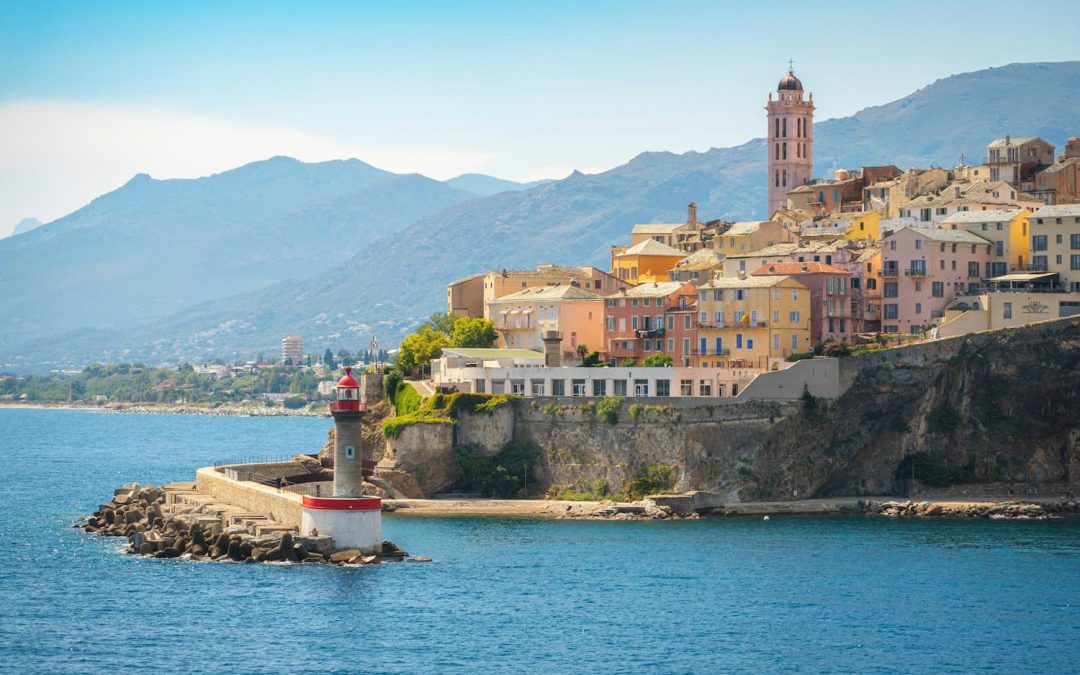This post contains affiliate links.
Bastia in a Day is your guide to what you can see and do in this northern gateway city of Corsica. The city of Bastia is the first impression of Corsica for many folks arriving by air, or by ferry from mainland France and Italy. It’s a city where you can learn about the history, culture and people of Corsica, who view themselves as uniquely separate from France.
Be sure to bookmark or circle back to these detailed articles to help you plan your trip to Corsica.
Explore the Mediterranean Islands jewel of Corsica on a one-week road trip (insert link)
Article includes suggested routes, accommodation guide, and car/motorcycle rental tips.
Corsica Island by bike Article details how to plan your self-guided tour of the island by bike or e-bike.
Bastia
For many folks, Bastia marks the beginning of a trip to Corsica. Being relatively compact and walkable, it is also possible to see Bastia in a single day too.
Bastia is the commercial capital of Corsica and a major port of entry via air or sea. Since Genoese times, its nucleus has been a picturesque quarter of ramshackle old tenements, with buttressed walls and cobbled alleyways radiating from the harbor. The twin towers of the St Jean Baptise church is a major landmark, dominating the skyline viewed from the port.
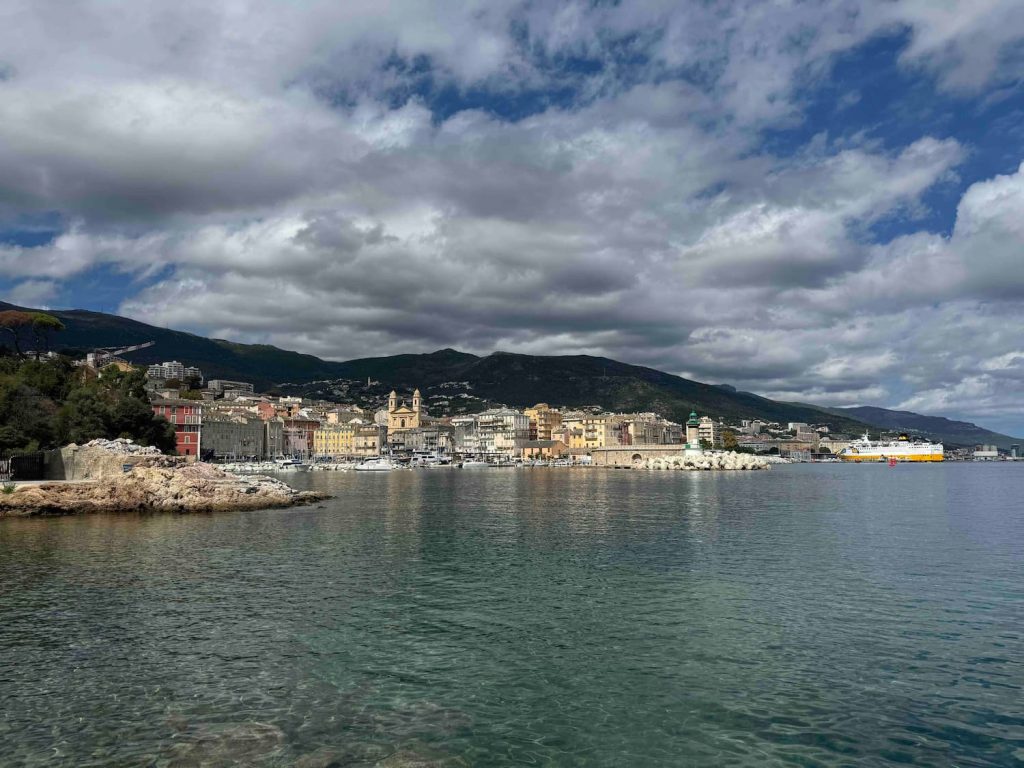
Bastia history
Bastia has history dating back to the Baroque era of the 1600s, but for more recent historical fans, it also had a curious WW2 role to play. The city witnessed the most intense battle fought on Corsican soil during WW2 when Kesselring’s army fled through the city back to the Italian mainland. Ironically, the worst casualties were sustained the day after the Nazi evacuation. Due to a mix up in the Allied command, a squadron of American B-52 bombers destroyed the Vieux Port just as its inhabitance were out celebrating in the newly liberated streets. Tragic, but true.
A culture of independence
The fierce independent spirit or Corsicans from mainland France is palatable throughout the island. You’ll feel it upon arrival in Bastia. There’s a law abiding orderliness in Corsica, distinct of mainland France and its perceived laissez-faire attitudes. And there’s a fierce loyalty to the Corsican flag, adopted in 1755, featuring a Moors head in black wearing a white bandanna, representing freedom and victory. You’ll see the flag throughout the island, and some times in place of the more familiar vertical red, white and blue of France. Understanding the seeds of history and what it represents, begins in Bastia.
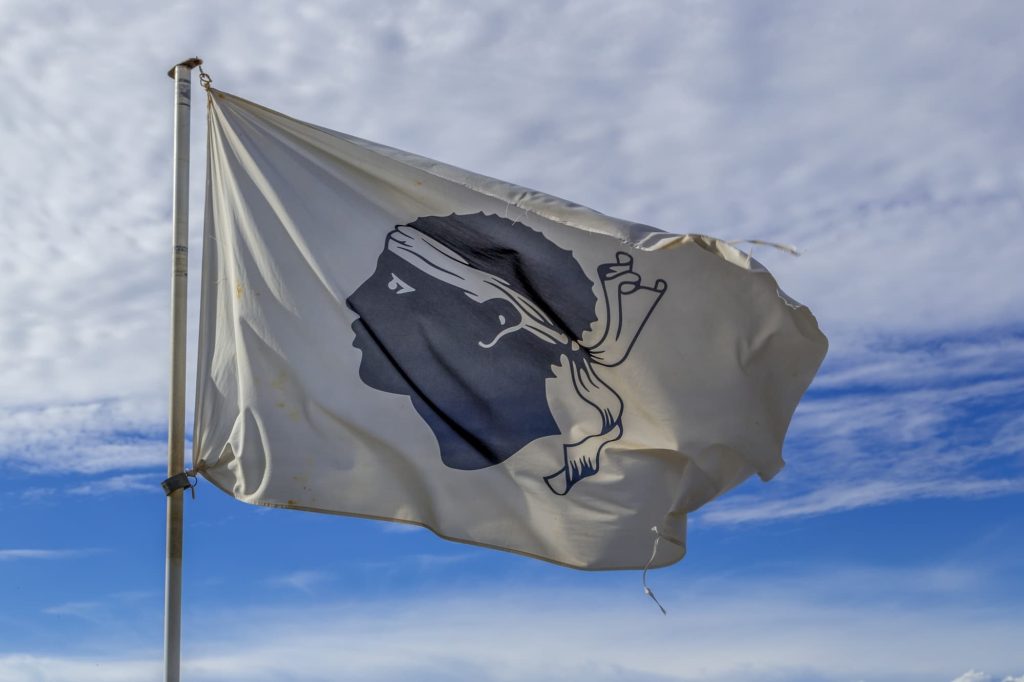
Originally the area which is now Bastia was a fishing village called Marina de Cardo. The city became Bastia in the 14th century when the Genoese built a citadel there called “Bastiglia” to protect the harbor. Due to its prominence on the skyline, the name of the citadel for the city stuck.
Under Genoese rule, Bastia became the capital of Corsica, a period marked by its development as a military and commercial hub due to its strategic location. The city grew in the 18th century, eventually leading to the end of Genoese dominance in 1768 when Corsica became a French territory.
Things to do in Corsica – Bastia in a day
Much to see of cultural and architectural significance in Bastia can be found in three areas of the city: old town, the port area, and the city’s churches.
Terra Vecchia (Old Town)
Since Genoese times, the cities nucleus has been a picturesque quarter of ramshackle old tenements, with buttressed walls and cobbled alleyways radiating from the harbor. Strolling through this older part of town, characterized by a maze of alleys and classical facades is a must see.
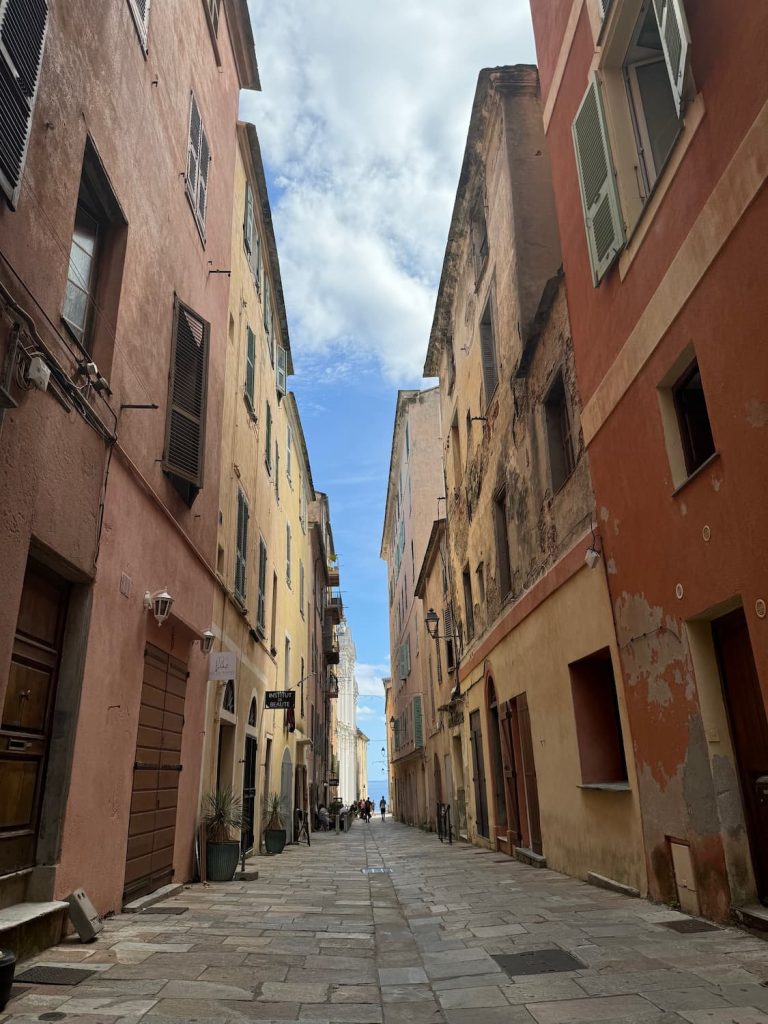
Churches
Bastia is home to several historical churches. The twin bell towers of the Saint Jean-Baptiste church, built between 1636 and 1666, are the town’s signature landmark. They’re a must see, but let’s face it, you can’t miss them!
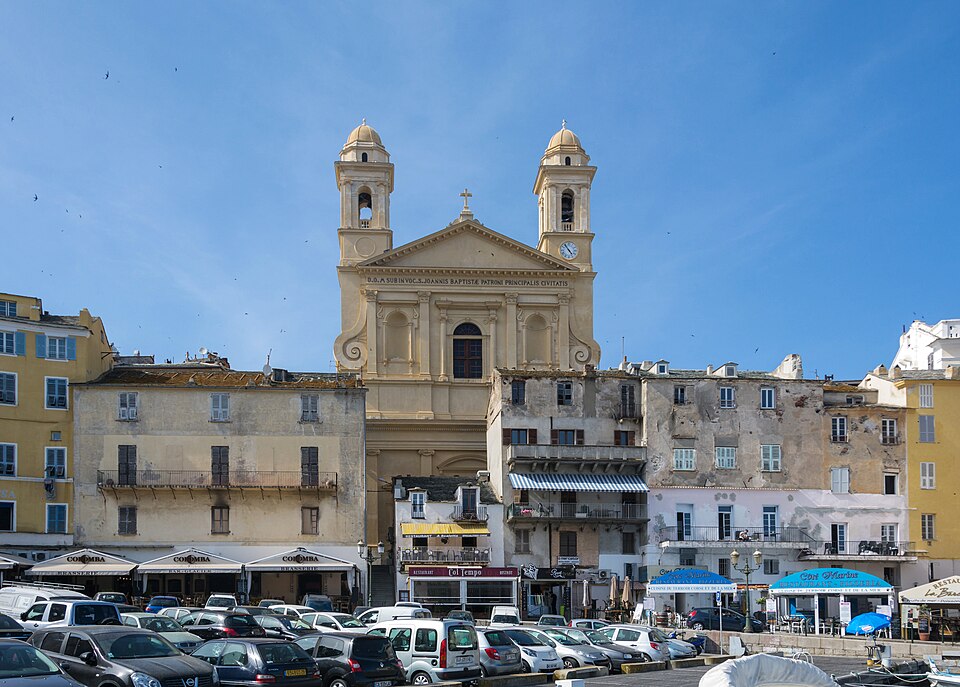
Old Port
Bastia hosts a beautiful harbor at the hub of the city, a haven for yachts and dining. Behind the Vieux Port, an amphitheatre of apartments look out to the sea. The ferries departing and returning from Italy throughout the day are a reminder of the countries close proximity and influence on Corsica. Indeed it is French you will hear in Corsica, but with a distinct Italian accent. And as you’ll learn when touring Corsica further, the Italian language influence is ubiquitous throughout the island.
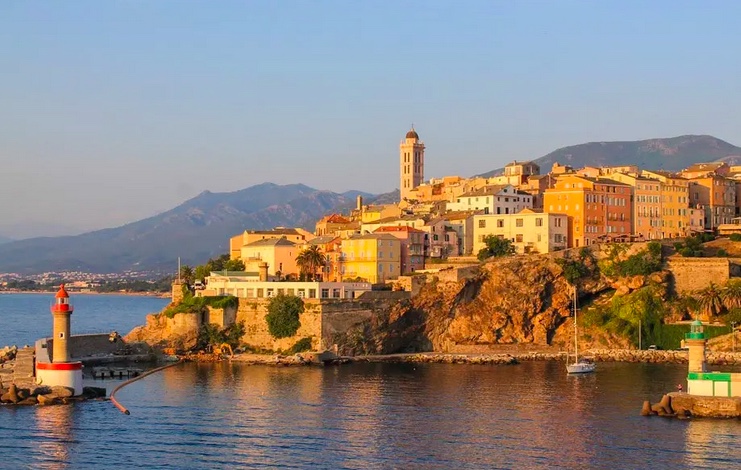
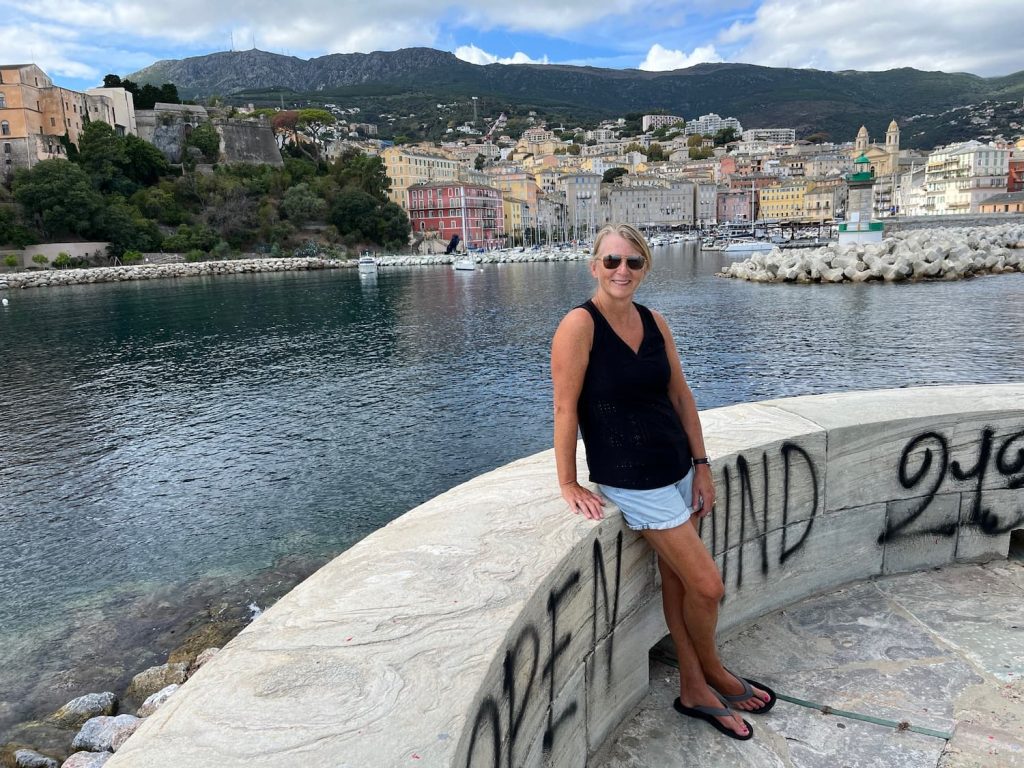
Pick accommodation close by
We’d recommend planning a couple days stay in Bastia, to rest up for the adventure ahead in touring the island if you’ve arrived from abroad, but also to allow a day to tour the city. Becoming familiar with Corsica’s culture and history in Bastia will help give you a richer understanding of the entire country.
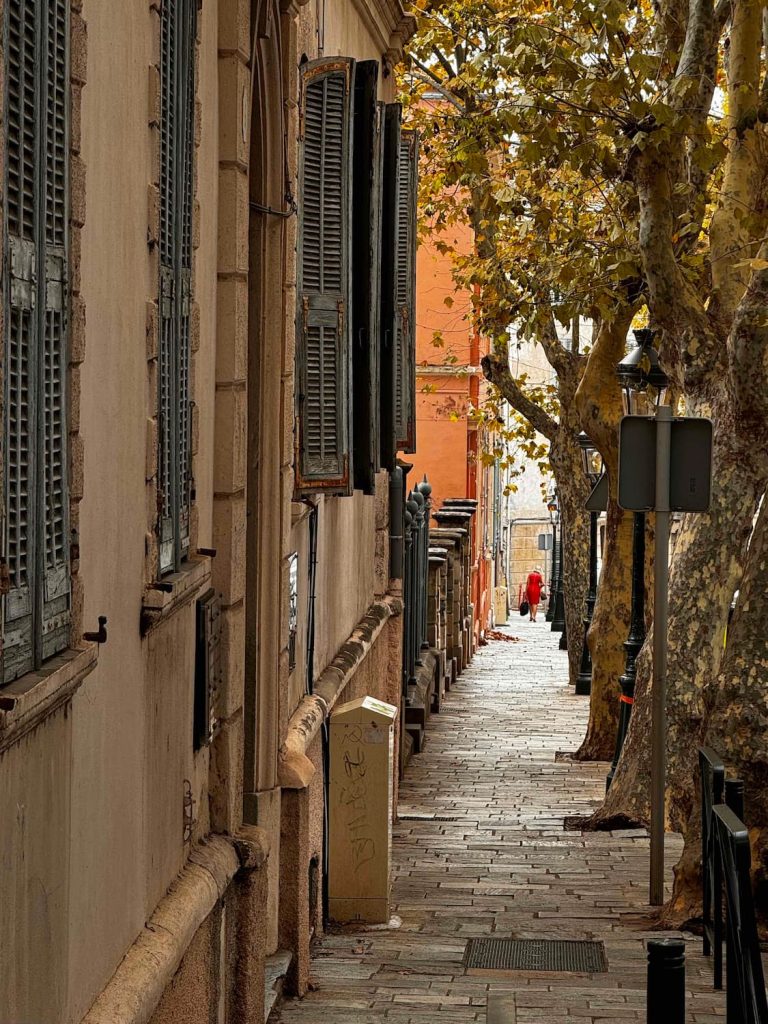
Since the city is very walkable, we’d recommend staying relatively close. We stayed at the Hotel Le Bastia, situated up the hill and overlooking the city. There are many accommodation options in the city, but we found Hotel Le Bastia to be clean, comfortable, and just far enough from the hub of the city to be reasonably priced, while still very much suitable for a day walking tour.
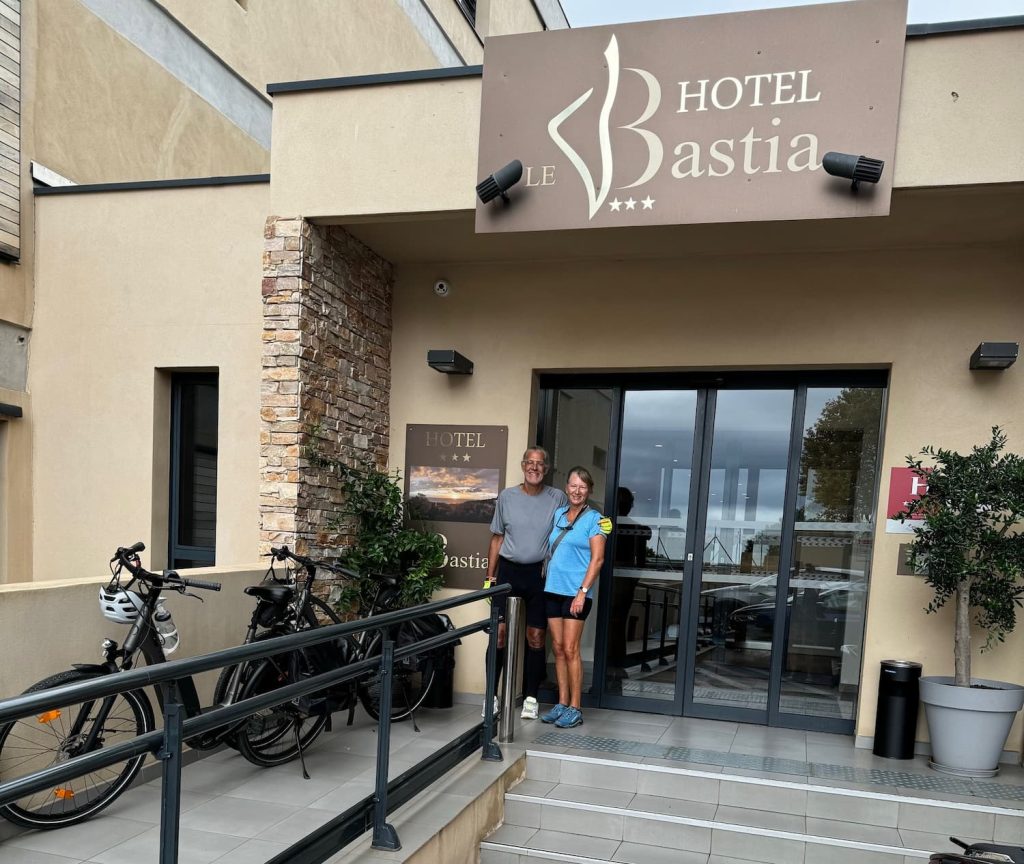
Plus it had a great view of the city and harbor, and a hearty buffet breakfast to set you up for the day!
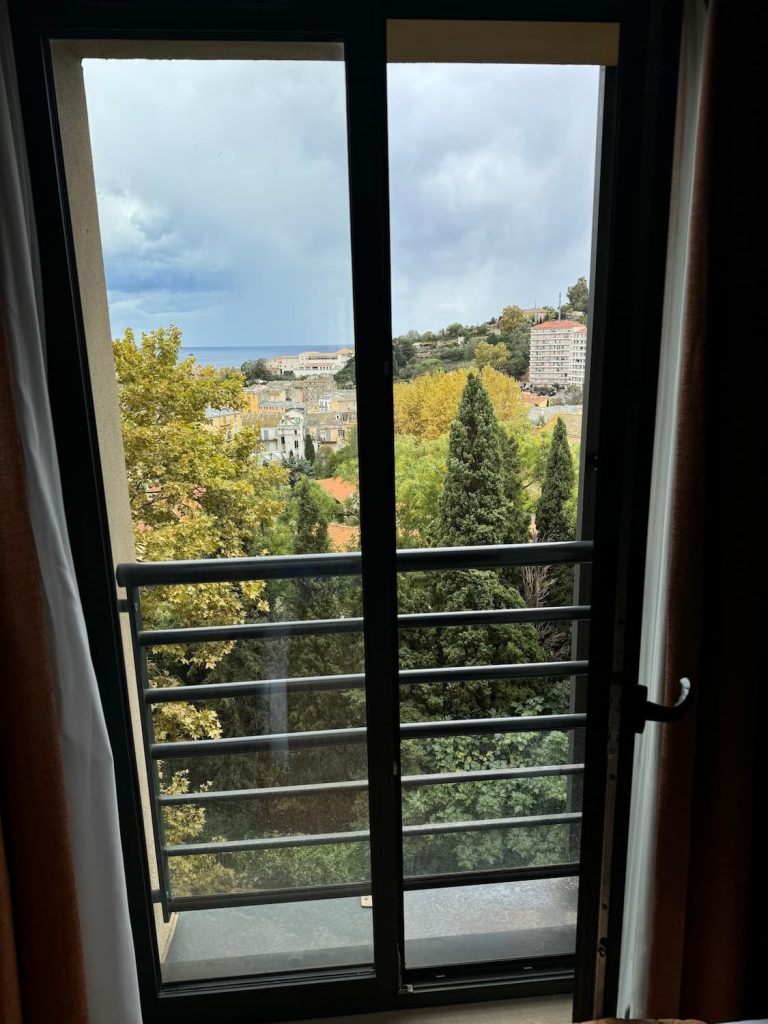
Let’s take a closer look at some of the must see sites while touring Bastia.
Boulevard Paoli
Bastia’s principal street is the grand thoroughfare lined with impressive Napoleonic-era apartments and ritzy shops. It can get crowded earlier in the day, but lessens after lunchtime. A stroll down Boulevard Paoli is a must during your stay.
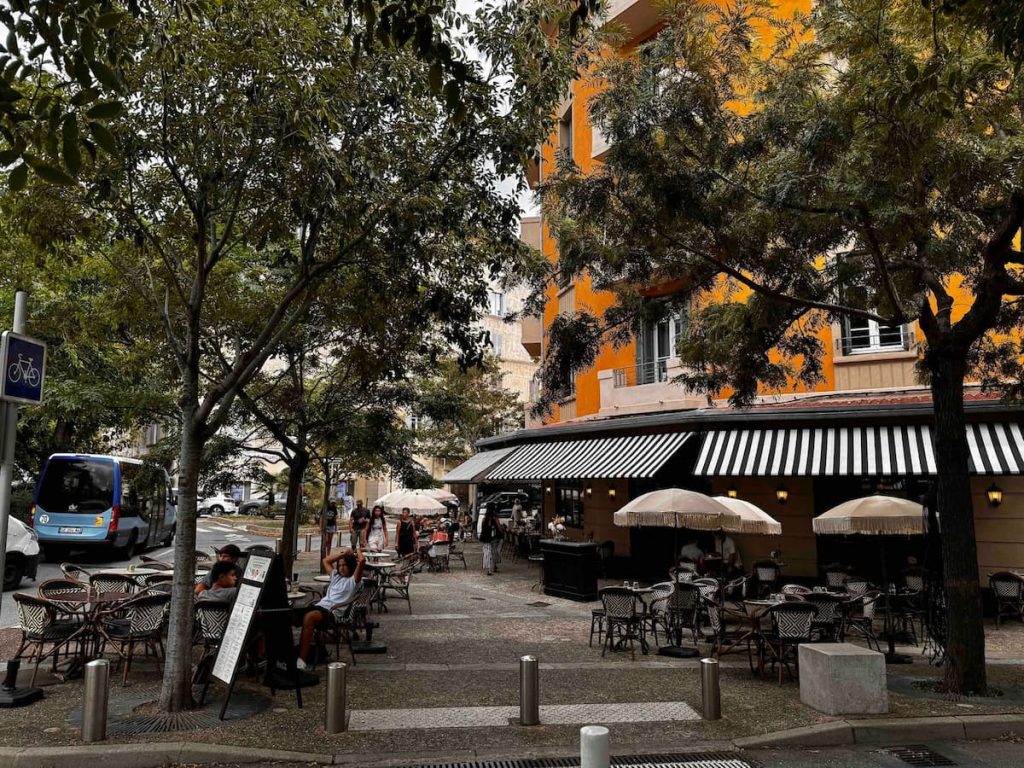
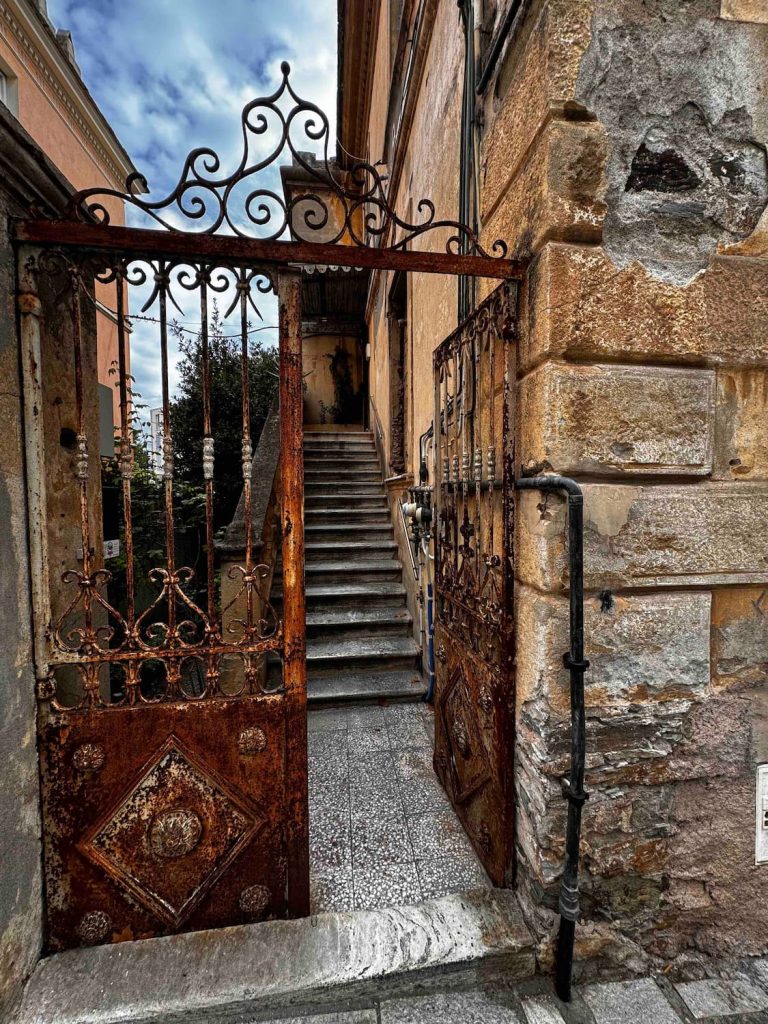
The Citadel
This historical fortress is a great place to get a bird’s eye view of the city and the Mediterranean Sea beyond. The Citadel was constructed between the 15th and 17th centuries.
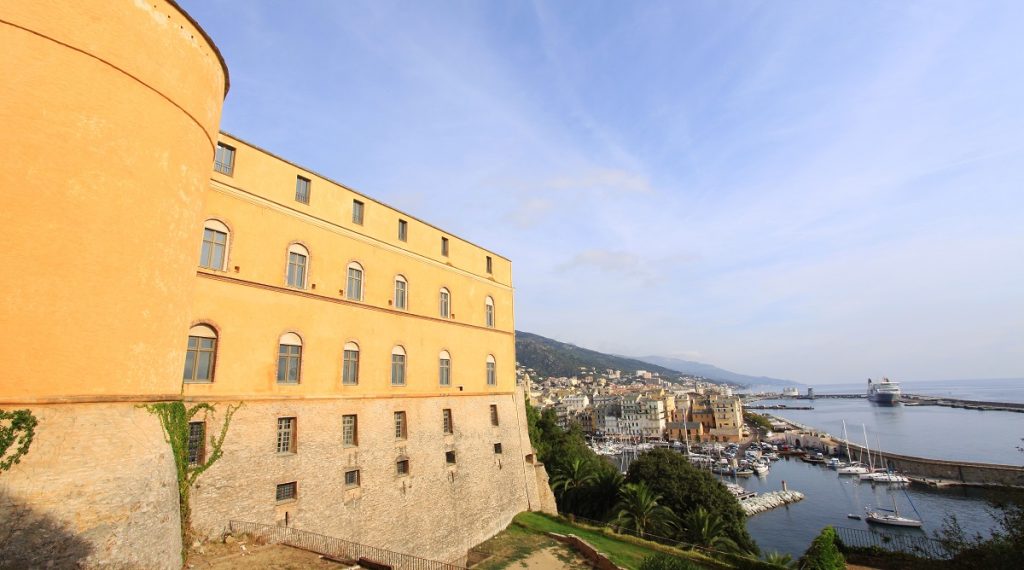
Musee de Bastia (Museum of Bastia)
The Citadelle’s renovated Governor’s Palace holds a museum charting Bastia’s evolution as a trade and artistic center. It hosts exhibitions of local art, history, paintings, sculptures and artifacts. The museum is a great place to start for history buffs.
Saint Jean Baptise church
Since much of Bastia’s history is found in its churches, this is a great place to start your tour of churches. Just head for the twin towers.
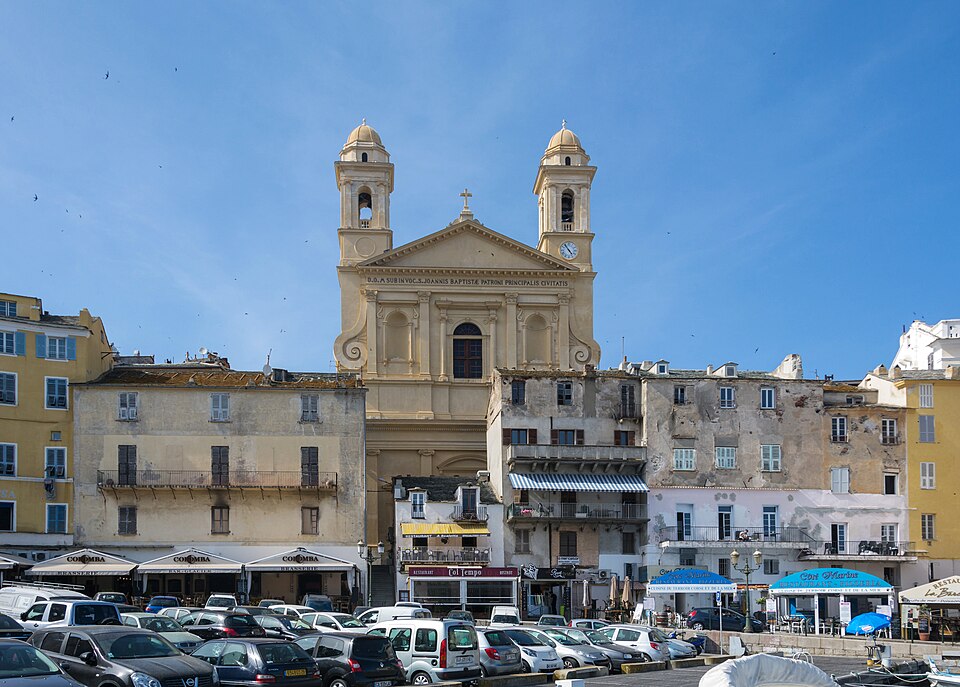
Cathedral Ste Marie and Oratoire Ste Croix
This pair of majestic 15th century rococo churches in holds Bastia’s Citadelle miracle working icons – the silver Virgin and the blackened oak crucifix “Christ des Miracles” which was retrieved from the sea in 1428.
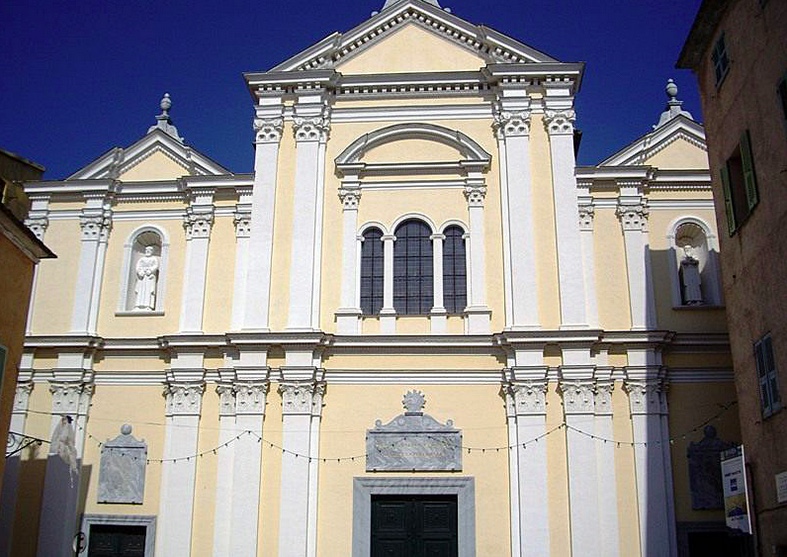
Interior of cathedral
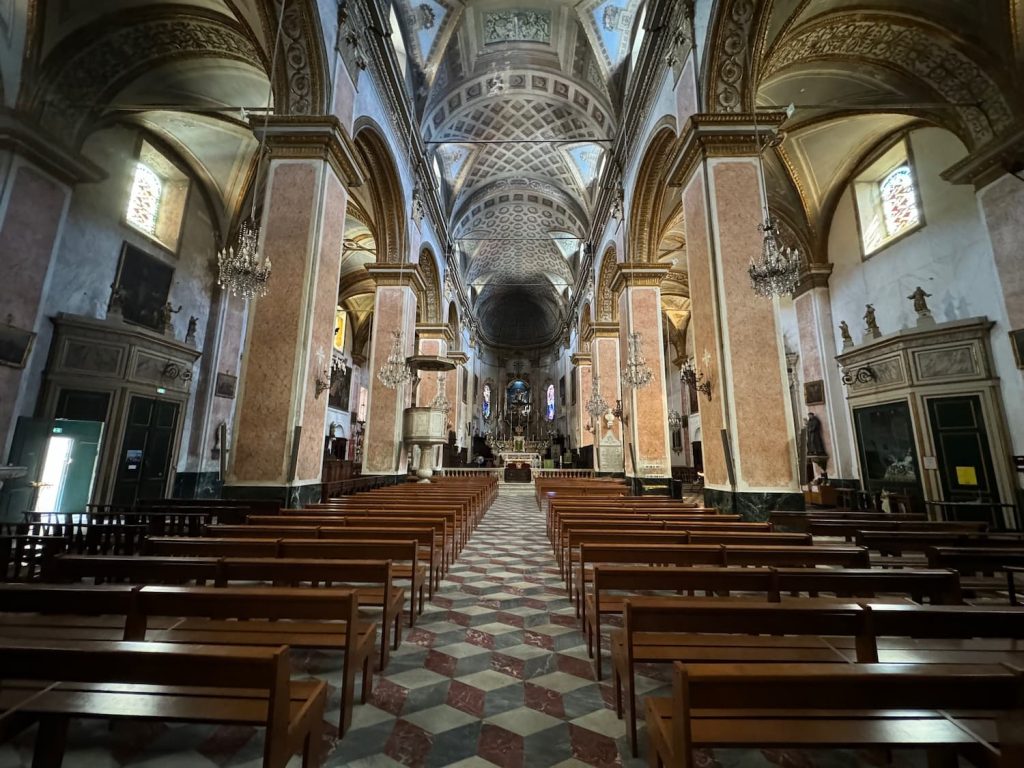
Oratoire de l’Immaculee Conception
This Baroque chapel, built in 1611, has an ornate interior. Behind the altar is a painting of the Immaculate Conception.
Place St Nicolas
Down by the harbor, and open to the sea on one side, Place St Nicolas is where Bastia’s residents (and a few tourists) come to wine, dine, stroll and play petanque under the trees. A weekly flea market (6am – 1pm) draws crowds on Sunday mornings.
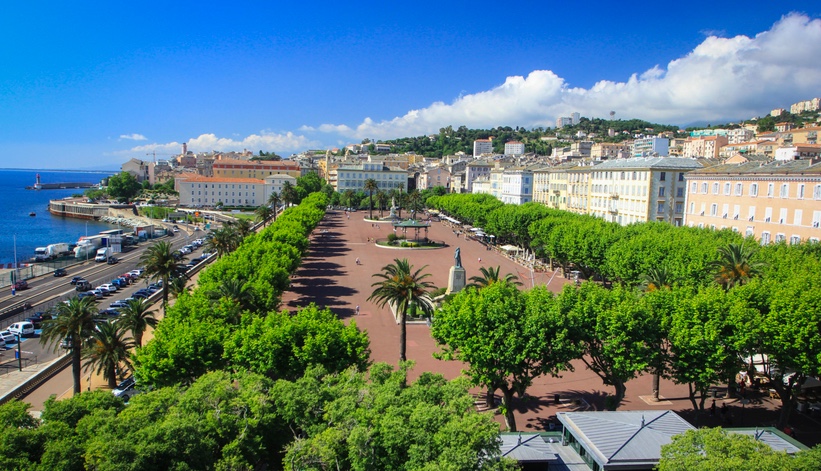
Casablanca submarine
Casablanca, a French Navy submarine, played an important role in the liberation of Corsica. It landed 109 Special Forces men at Arone Beach near Piana. Its tower is on display in Bastia at the Place Saint-Nicolas along the water’s edge walkway.
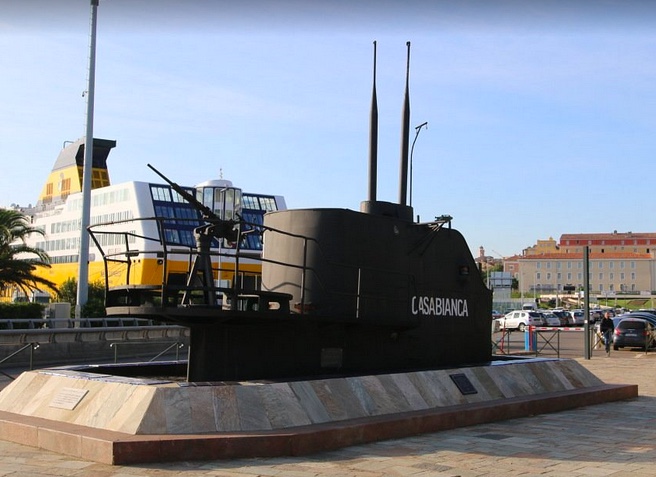
Place du Marche
This fresh produce market is a source of local delicacies, as well as the perfect place to people watch over a leisurely coffee.
Vieux Port (Bastia’s Old Port)
You can head to Bastia’s old harbor during the day, but our preference was late afternoon or sunset. The harbor jetty provides the best viewpoint. Lined with cafes and local boat traffic coming and going, it’s a great place to get a feel for this port city.
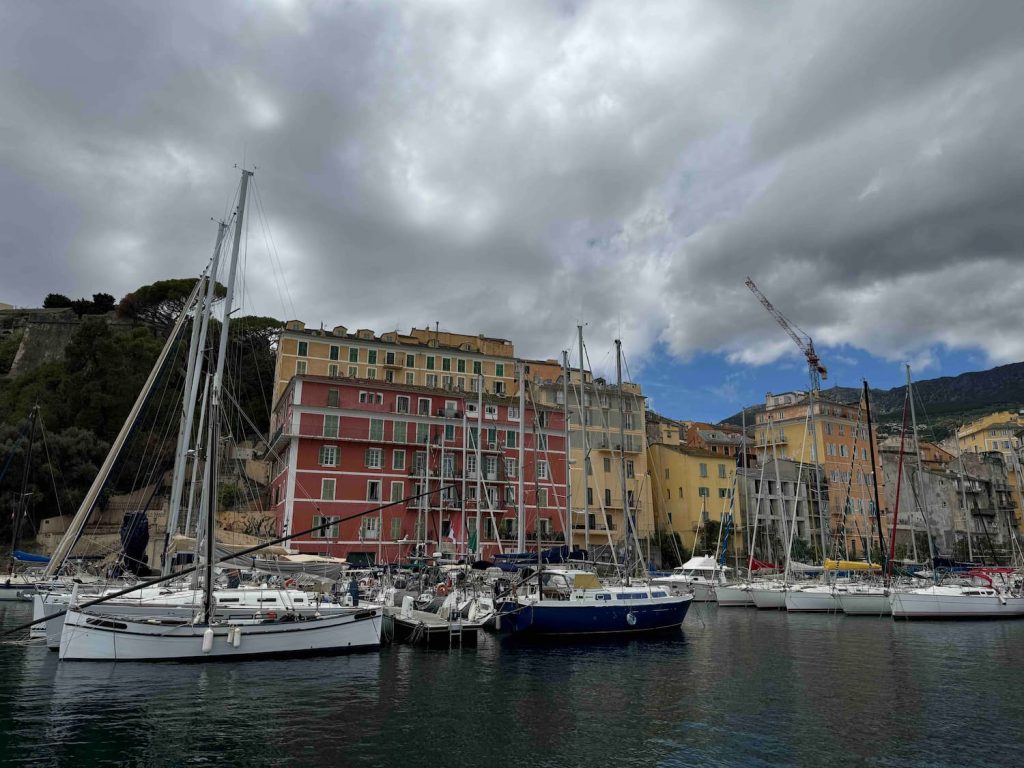
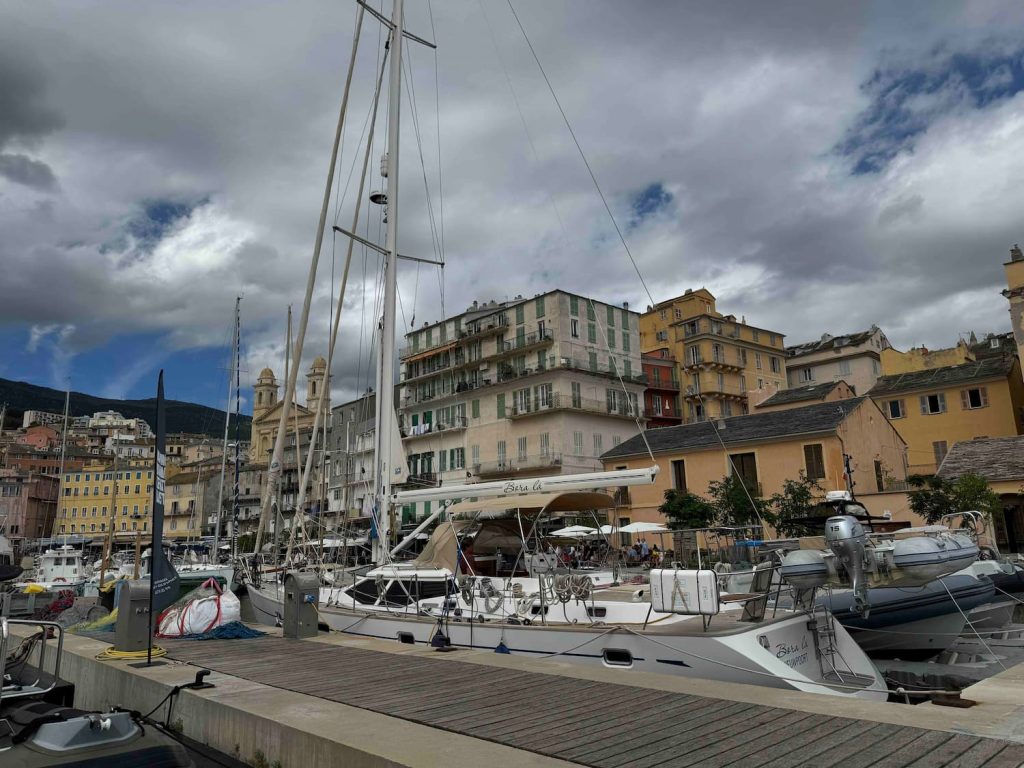
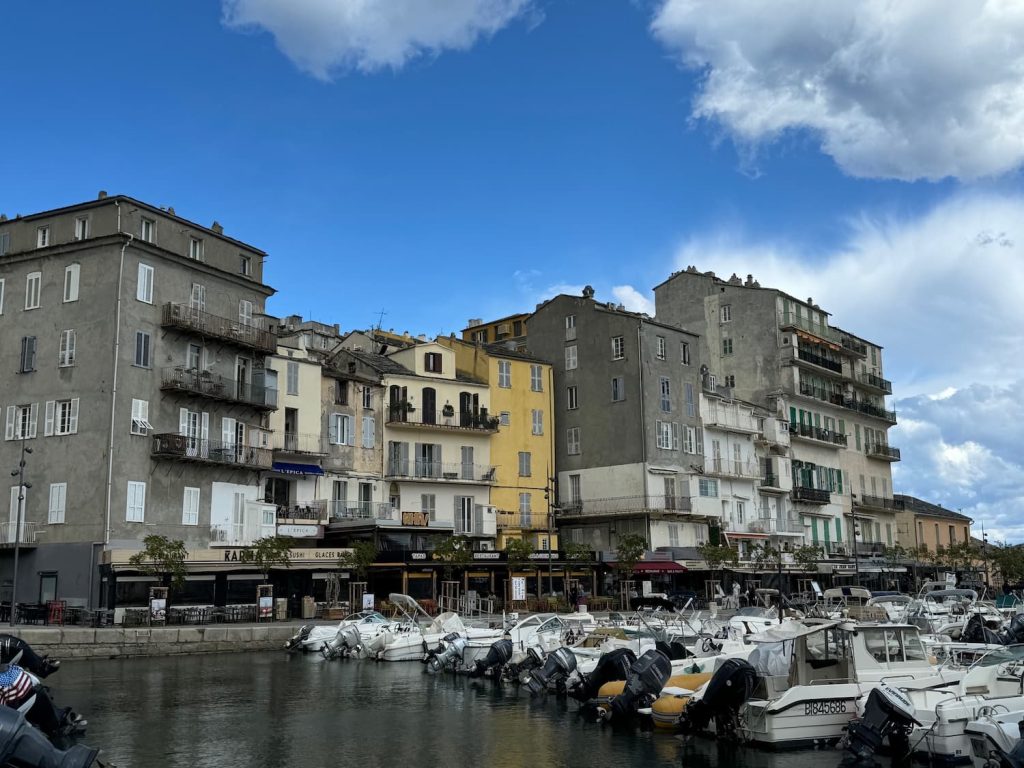
Chilling by the port after a day of touring inspired this sketch, something I love to do while visiting an area. Slowing down to notice details, and engage with others passing by, can be a great way to truly appreciate an experience.

Accommodations
Check out accommodation options on this map of Bastia
Ferry schedule to Bastia
The following sites will help you source ferry information for Bastia, and to plan you visit to Corsica. Be sure to check for seasonal updates directly on the ferry operator site though.
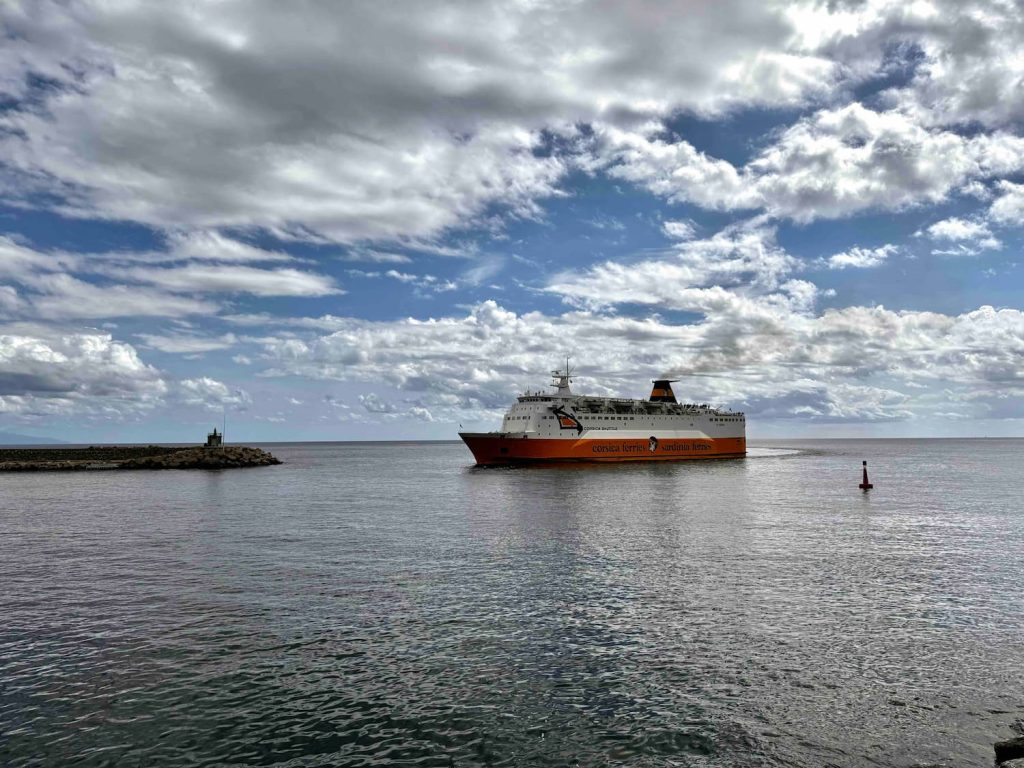
Ferry booking apps & ferry lines servicing bastia
Ferryhopper is good for overall planning, comparing prices and ease of booking . When searching schedules for Corsica, you’ll find Mobylines and Corsica Ferries as the two primary providers. We used it throughout Europe and loved that the app on our mobile phone for keeping track of tickets and checking in. Ferryhopper.com
You can also check schedules directly through these links.
Mobylines.com – one of the two primary ferry lines servicing Corsica routes
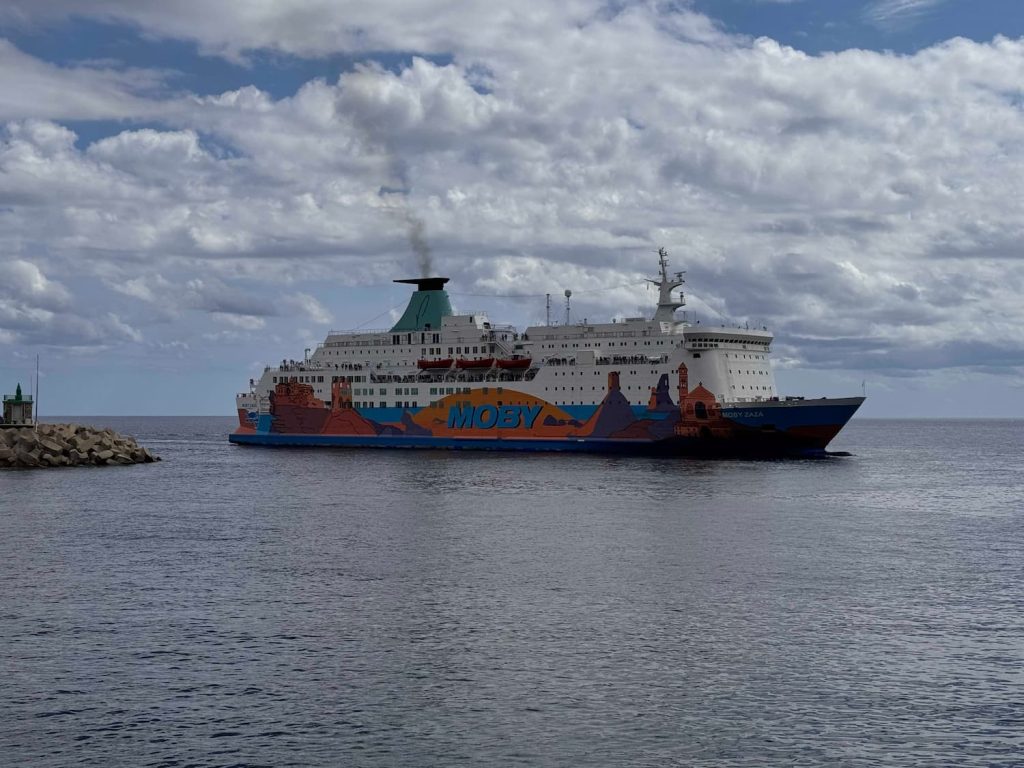
Corsica-ferries.co.uk – the English language version of the other primary line servicing Corsica routes
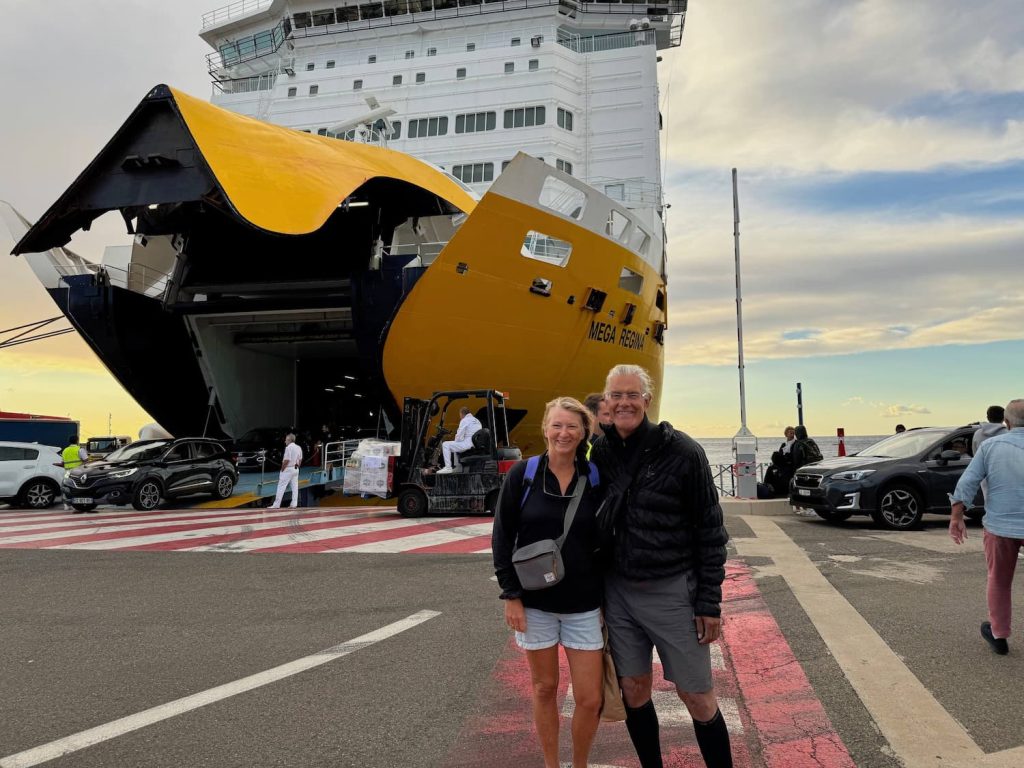
We have personally used Corsica Ferries from Bastia to Loverno, Italy and can attest that it is a clean, modern and well run ferry line. We used Ferry Hopper reliably to purchase ferries throughout Europe without issue, and the handy app on your mobile is a great way to keep track of e-tickets.
Bastia by night
Bastia can be a beautifully mysterious, charming and reasonably safe city to walk late night, or early morning before sunrise, if you’re catching a departing ferry.
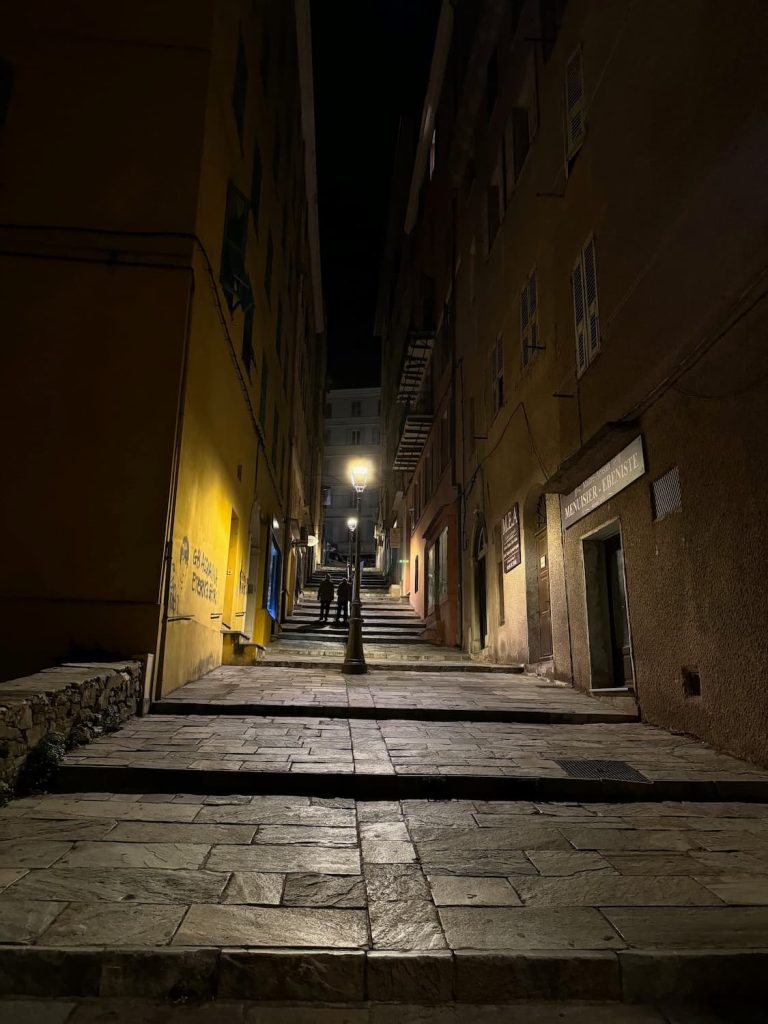
Alley leading through Old Town down to the port
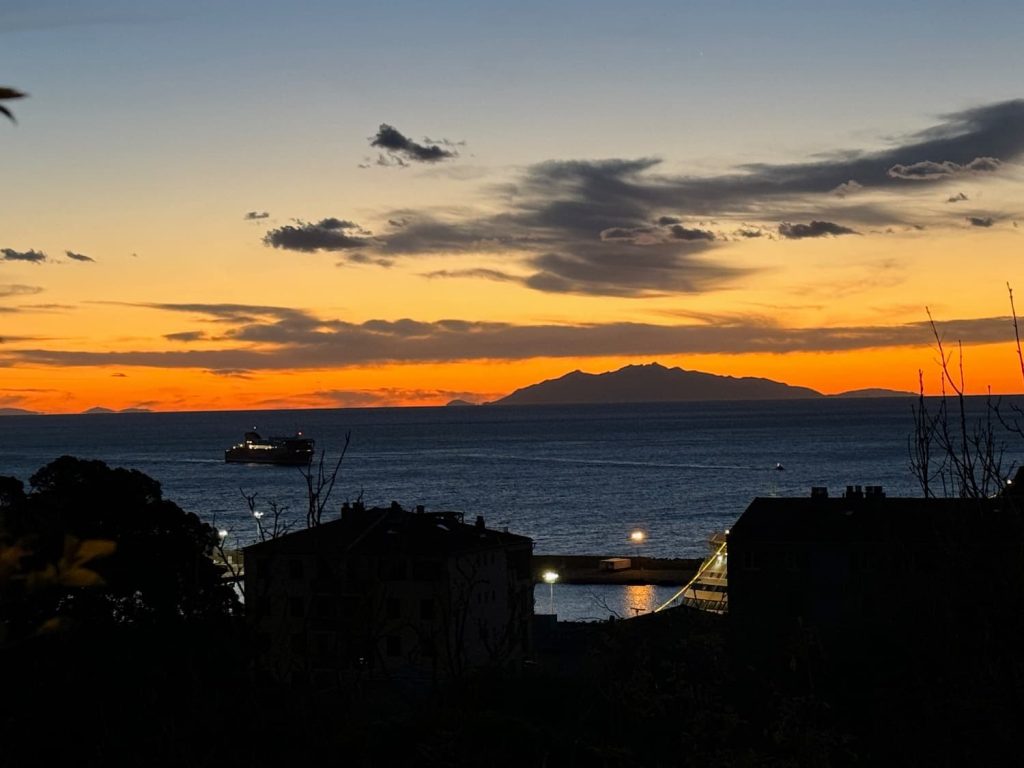
Catching a departing ferry at sunrise can be spectacular! (View from our Hotel Le Bastia room)
Guided tours of Bastia
Why not get even more out of your day tour of Corsica, by hiring a local guide? Check out the tour options below through THIS LINK.
Bastia: Private custom tour with local guide
Les Legendines, an unusual tour of Bastia
Bastia gourmet food tour
Must see attractions private tour of Bastia
Bastia: Private Walking City TourBastia: Express Walk with a local for 60 minutes

